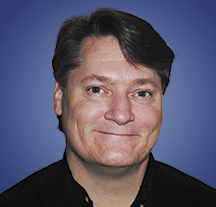INTERVIEW
On Improving Your Results

David Stendahl is the portfolio manager at Capitalogix, a Commodity Trading Advisor (CTA) firm specializing in systematic trading. He is also a leading industry expert, author, and speaker focused on the managed futures industry. Stendahl has lectured at numerous national and international conferences and written on system evaluation and money management techniques. He is also the author of Profit Strategies: Unlocking Trading Performance With Money Management and the coauthor of two additional books, Dynamic Trading Indicators and Computerized Trading. His trading expertise has been featured in a number of educational videos, including The Systematic Trader. He also co-created various performance analysis software packages, including Performance Summary Plus (now incorporated into TradeStation), Portfolio Evaluator, and Money Manager.
Stocks & Commodities Editor Jayanthi Gopalakrishnan and Staff Writer Bruce Faber spoke with David Stendahl on June 7, 2012.
Dave, how did you get interested in technical analysis?
As a kid, I was interested in the stock market, but it wasn’t until I became a stockbroker that I started taking things more seriously. Then I began to examine technical analysis. I discovered I liked to design trading systems, but to analyze and design them, I knew I needed better tools. Eventually, I cofounded a software company called Rina Systems. We ended up creating a number of tools such as the Performance Summary Plus, Portfolio Evaluator, and Money Manager, each of which are now part of TradeStation.
After that, I started a career on the trading side. I am now with Capitalogix, where we are forming a fund. It is all systematic, which is how I like to trade. We are looking at new ways of designing systems and how to construct portfolios.
You have done a lot of work with money management. How did that come about?
I view the markets now in terms of baskets. You could think of them as mini-portfolios combined into a larger one.I realized that with trading systems, there was money to be made, but the real money was in how you manipulated the buys and sells.
In addition, the real money could also be found in the use of position sizing, finding ways in which you can increase/decrease position size, number of contracts, or leverage to maximize your ability to make as much money as you can, given whatever buy and sells were presented.
How do you go about determining position size?
That is a complicated question. I view the markets now in terms of baskets. You could think of them as mini-portfolios combined into a larger one. In certain instances we use a fixed fractional with an average true range (ATR) formula (see sidebar, “Position Sizing Terms”) that looked at when a position was on, how much downside risk it had, how many positions you want, and how much capital you have for that individual portfolio.
In other instances, we use a basket concept where we have a lot of systems similar to one another each with an equal weighting within that basket. We then trade the basket taking positions once certain ratio levels are triggered. We call them “ratio levels” because we are looking for certain ratios of systems to trigger before we execute our position.